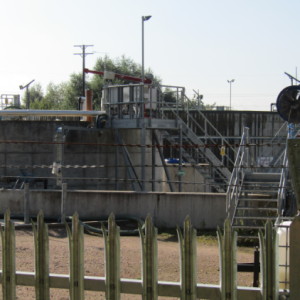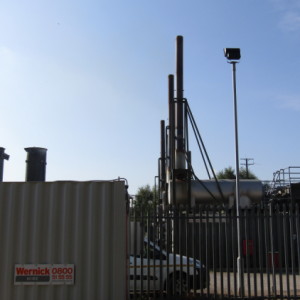Today my team enjoyed another visit to our nearest landfill site. I wore my industrial yellow wellies combined with my practical purple harem pants; my favourite colour combination.
Allow me to explain a little about how landfill works;
Down at the very base of the whole thing is a series of impervious cells, not unlike those brown plastic trays you find inside a presentation box of chocolates.
Non-recyclable garbage is tipped on top, heavy machinery with spiky wheels drives back and forth across it all day to compact it and towards the end of each day an amount of earth is spread across the day's tipping to prevent it from blowing away during the night.
At the lowest point in each cell is a pump, and as the depth of the waste increases, interlocking concrete cylinders are added, each one on top of the last, to allow us to pump out the nasty brown liquid gunk that collects at the base of each cell. This is the same stuff you find in the bottom of your kitchen waste bin, but on a monstrous scale, and because of rain, less syrupy. We have to ensure that it is pumped out before it reaches the level of the top of the chocolate-box tray, otherwise it could seep into the water-table.
Meanwhile, the festering garbage is decomposing and giving off gas; mostly, but not entirely, methane. It is extremely combustible, and therefore highly dangerous. To manage this we have large diameter perforated pipes rising vertically from the base of each cell. The gas finds its way into the pipes through their perforations. At a level of 5 metres below the surface of the waste those pipes become solid, to prevent the escape of gas into the atmosphere. Therefore, as the level of tipped waste rises, these gas wells must be sealed off and re-drilled so that there is a greater length of perforated pipe through which to collect the gas coming off the higher levels of waste.
Part of my responsibility includes awareness of the difference in levels between the current height of the waste pile and the height of the chocolate-box tray base so that no gas-well drilling activity punctures the impervious barrier between the brown syrup and the water-table.
The brown gunky liquid is called leachate and is pumped to the leachate treatment plant where it resides in a series of vast tanks and where it is attacked by microbes and bacteria which, amazingly, render it safe.
The gas, meanwhile, is sucked up by engines at the on-site power-plant and is converted to electricity which we sell to the National Grid. When the natural production of gas falls below a level sufficient to run an engine, for safety reasons it must be burnt off in flares.
For every container of refuse we receive, the provider has to pay approximately £120 to have us manage it. Of that, £80 goes to the UK Govt. in landfill tax and we get £40 to handle it. Treating the nasty brown juice known as leachate is horrifically expensive, but converting methane into electricity is highly profitable. If that weren't the case my company wouldn't exist and garbage would be thrown into the sea.
Extras:
Leachate treatment plant
Power generation plant (engines on the right, flares for surplus gas on the left)



Comments
Sign in or get an account to comment.


